
Most people associate Joseph Haydn with his time in the town of Eisenstadt, serving as musical director at the court of the Esterházy family out to the east of Vienna. But he actually had a surprisingly long association with Austria’s capital.
- Book a concert experience* for Vienna
- See also:
Haydn: his life
Haydn arrived in the city in 1740 aged just eight to serve as a chorister at Stephansdom cathedral and stayed for almost 20 years before leaving for Bohemia and then Eisenstadt.
The composer returned to live in Vienna permanently in the 1790s, eventually settling in a quiet suburb until his death in 1809.
In the years between those Viennese periods, Haydn still visited the city to serve his princely employer, visit friends, and give or attend performances of his works.
The Haydnhaus

(Haydn’s final residence and now a museum)
This is the unmissable bit of any Haydn visitor trail: the house at Haydngasse (!) 19 where he lived for the last 12 years of his life is now an excellent Haydn museum.
Inside features displays on the man and his music, with a focus on those later Vienna years. The exhibits include Haydn’s clavichord and pianoforte. And, as a special bonus, the museum has a room dedicated to Brahms.
Other residences
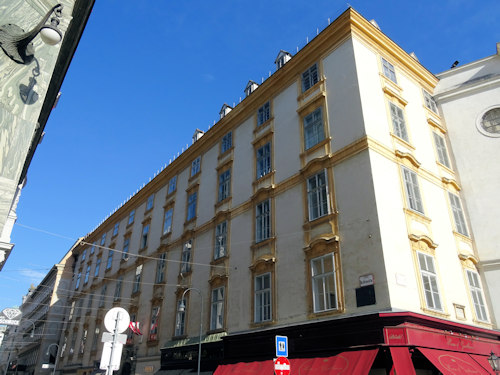
(Kohlmarkt 11 in Vienna’s centre)
Well, the Haydnhaus is one of only two Haydn residences that still exist (as far as I can tell). The other is the private house just off Michaelerplatz on Kohlmarkt (number 11), known as the Großes Michaelerhaus.
Haydn lived in this building after being thrown out of the choir. A plaque at the end of the house commemorates the connection.

(Plaque on the recently renovated Neuer Markt)
I found no other residences with the original building still intact. House number 2 on the Neuer Markt square does, however, bear a plaque indicating that Haydn lived on that site between 1795 and 1797.
This Neuer Markt house is where he wrote the Kaiserlied, a hymn to the emperor of the time (Francis I/II). They later famously used the melody for the German national anthem.
The Mozart apartment
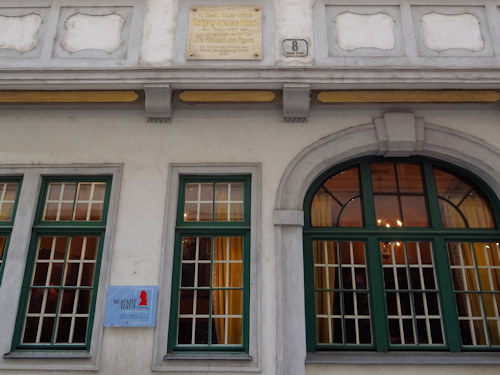
(The Mozarthaus)
The only Mozart residence still preserved in its original structure and now part of the Mozarthaus museum.
Haydn and Mozart played together there in a string quartet, for example. You can stand in the very room those casual performances took place in. Imagine!
Gumpendorf parish church
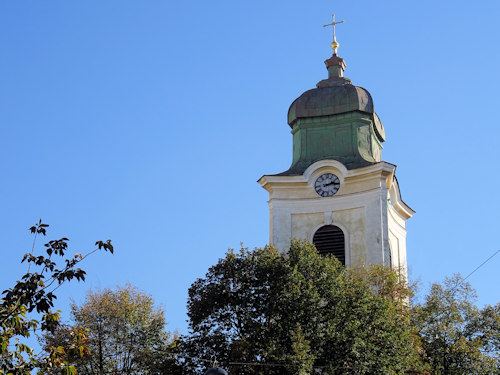
(The Gumpendorf church)
A plaque outside this little 18th-century church at Brückengasse 5 notes that Haydn’s body was blessed here before its burial.
Stephansdom
Just about everyone important in Vienna has a connection with the main cathedral. Mozart, for example, married his Constanze here in 1782.
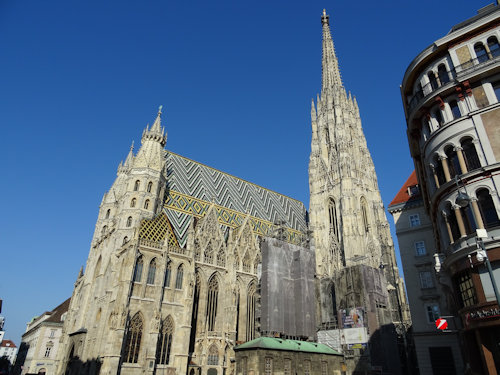
(The Gothic Stephansdom with its newer mosaic roof)
In Haydn’s case, he sang in the cathedral choir until his voice broke; he also married Maria Anna Keller at Stephansdom in 1760.
Haydn: his music
Regrettably, not so many places remain from the heady days of the 18th century. Nor do I have enough historical records to track down all the aristocratic homes Haydn may have visited or performed in. But…
Church of the Barmherzigen Brüder
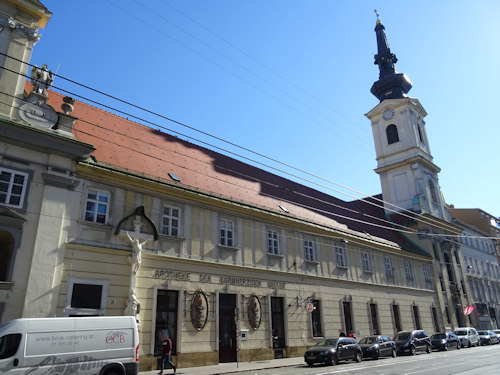
(Located in the historical second district)
This church at Taborstraße 16 (first built in 1622) belongs to a monastic complex that includes a modern hospital. According to the order’s own information, Haydn was employed as a church musician (“first violin”) there in the 1750s, before leaving in 1758.
Outside the church, a plaque suggests he was active in/with the choir between 1755 and 1758.
Church of Maria Treu
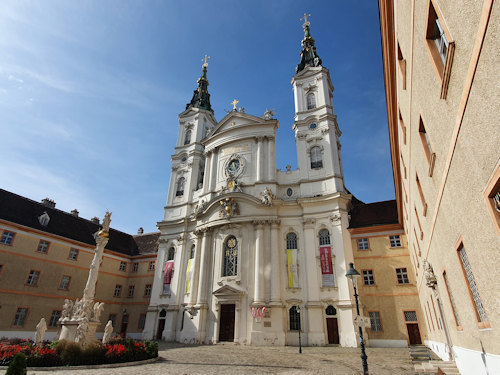
(The church also has a Brahms connection: he took a compositional exam here)
Known colloquially as the Piaristenkirche, this early 18th-century baroque church hosted, for example, the premiere of Haydn’s Missa in tempore belli (Mass in Time of War) on December 26, 1796.
Incidentally, Anton Bruckner took part of his composition exam in the same church. He passed, you’ll not be surprised to hear.
Esterházy Town Palace
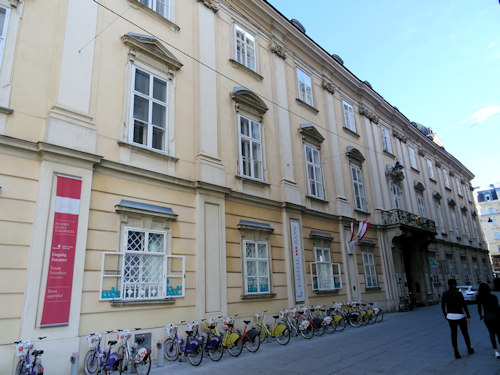
(Now offering more of a visual than musical experience within)
Haydn would have accompanied his employer to the “townhouse” of the Esterházys, built in the 17th century. Part of the palais at Wallnerstraße 4 is now the Museum of Illusions, so there is some public access.
Karmeliterkirche
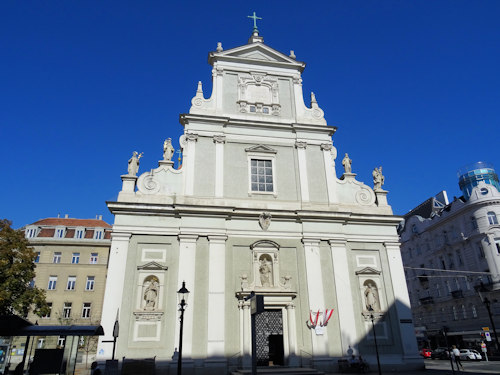
(Another second district location and close to the Church of the Barmherzigen Brüder mentioned above)
Haydn worked here as an organist during his early years. This 17th-century church at Karmelitergasse 10 originally belonged to a Carmelite order (hence the name, still used colloquially today), but is now the parish church of St. Joseph.
Austrian Academy of Sciences
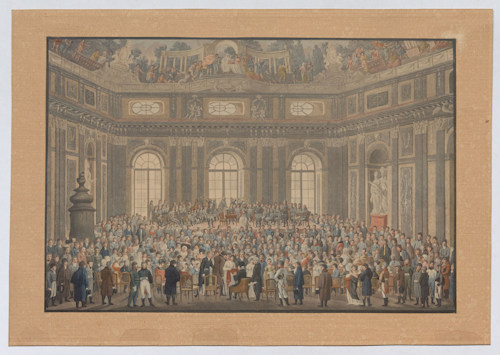
(Performance of The Creation on March 27th, 1808 in the presence of Joseph Haydn in the ceremonial hall of the old university. Painted by Balthasar Wigand; Wien Museum Inv.-Nr. 185015; reproduced with permission under the terms of the CC0 licence)
If the painting above is to be believed, then Haydn attended a performance of The Creation here. Back then, the location at Dr. Ignaz Seipel-Platz 2 formed part of the old university.
Haydn: memorials and more
Let us begin this section with a statue of the man himself…
Haydn monument
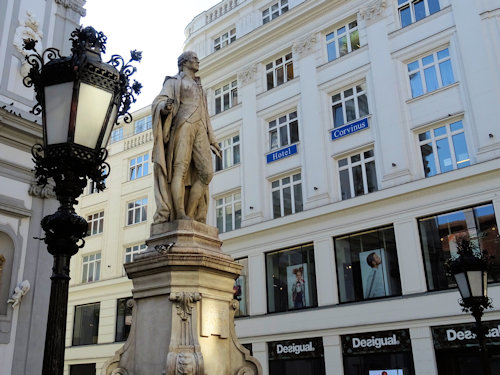
(The square also sits in front of another historical church: the Mariahilfer Kirche)
A large statue built in 1887 alongside Mariahilfer Straße (at No.55) to honour the composer. His rather imposing figure stares out over one of Vienna’s busiest shopping streets.
Haydn’s presence has inspired many of the nearby businesses, which often use his name. Like the neighbouring English-language cinema.
Maria Theresa monument
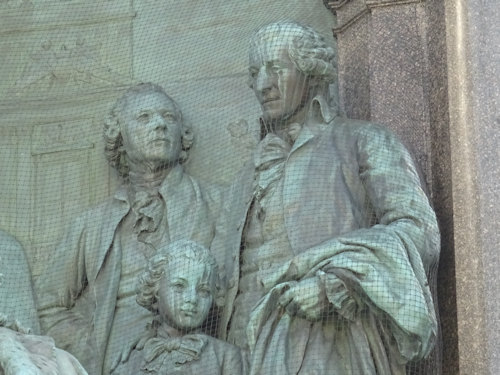
(Three geniuses in relief)
Although this 19th-century monument on Maria-Theresien-Platz actually honours Empress Maria Theresa, numerous large reliefs feature key personalities from her reign. This includes composers like Gluck…and Haydn.
The relief depicts the great man resting his hand on the shoulder of a young Mozart.
Ankeruhr
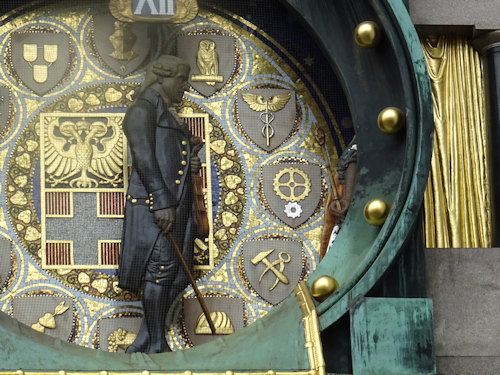
(The Haydn figure on Vienna’s famous mechanical clock)
An insurance company gifted this giant mechanical clock to the city in 1914. A set of 12 historical figures rotate around its front twice a day.
Most of the figures are Imperial personalities, but one exception is the composer that appears between 12 and 1, his arrival greeted by an excerpt from the oratorio, The Creation. So no prizes for guessing who that composer is.
Haus der Musik
Haydn gets a whole room to himself in the House of Music, as do many of the other famous composers associated with Vienna, like Beethoven, Mozart, and Mahler.
Neue Burg
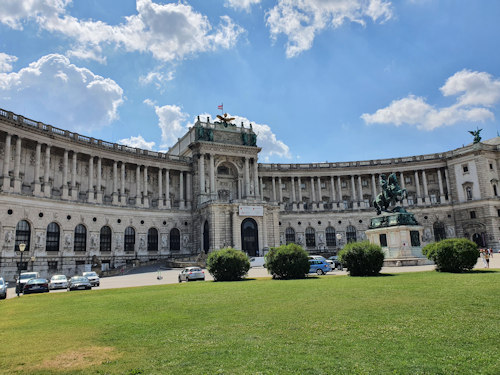
(Front view of the Neue Burg from Heldenplatz square)
This wing of the Hofburg palace complex houses the historical musical instrument collection, which includes a fortepiano allegedly played by both Haydn and Beethoven.
Another notable exhibit is a wax head of the master made during his lifetime (around 1800) by Franz Christian Thaler.
Minoritenkirche
Inside this church, a memorial to the famous librettist and poet, Pietro Metastasio (who shared that house on Kohlmarkt with a young Haydn), has the composer pictured among the figures on its central relief.
Haydnpark & Haydnhof

(Named for the famous local resident)
Haydn’s last resting place is in Eisenstadt, about an hour’s drive from Vienna. But he was first buried in the Hundsturmer cemetery, not far from the Haydnhaus: the body was moved to Eisenstadt in 1820.
The cemetery is long gone, replaced by a nondescript park named in honour of its one-time “resident”. A near neighbour is the Haydnhof: one of Vienna’s famous social housing projects from the post-WWI era. The complex is one of the stops on a city social housing walk.
Street names

(Um, this one is rather obvious)
Haydngasse (6th district) and Joseph-Haydn-Straße (14th district) both bear his name; not sure that really needed explaining. The former is, of course, where he had his final residence (see the Haydnhaus above); the latter a small street in the rural west of the city, close to the Wienerwald forest.
Madame Tussauds
Finally, nip inside the Vienna branch of the famous waxwork museum to encounter Haydn and a couple of other greats of classical (and more recent) music.
Haydn map
The map below shows all the main Viennese locations associated with Haydn: homes, monuments, and similar.
Many other Haydn landmarks fell victim to 19th-century city construction projects. I haven’t included these missing buildings unless some kind of plaque marks the musical connection.